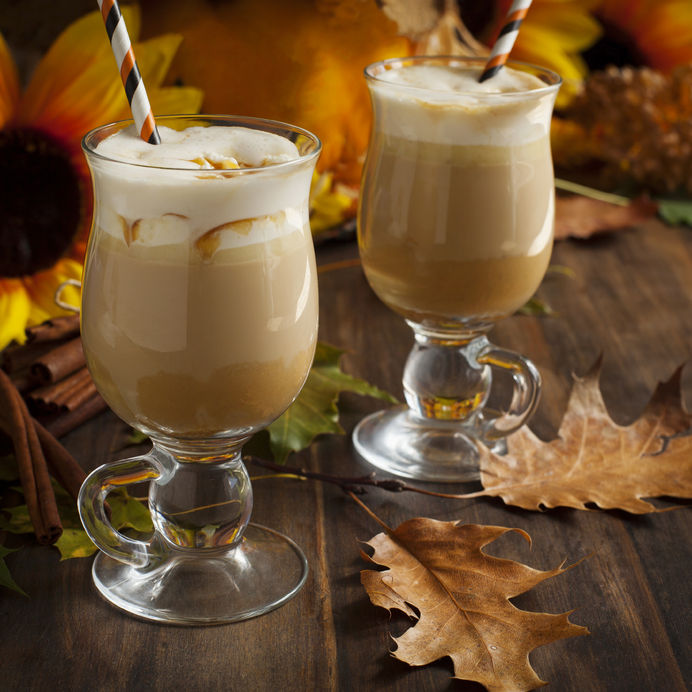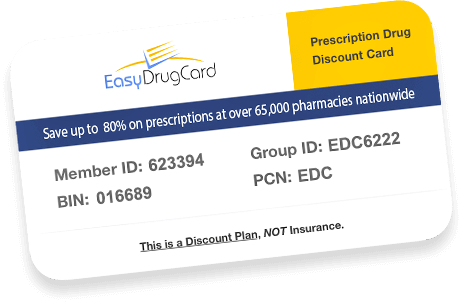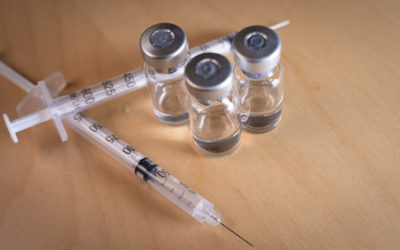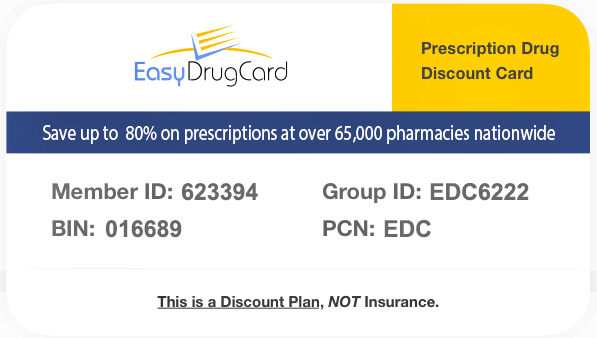Pumpkin Spices
When it comes to seasons, I think that fall takes the cake in terms of signature flavor profiles and aromas. When fall finally arrives, we all look forward to the quintessential pumpkin spice latte, pumpkin muffins, pumpkin pie, pumpkin spice everything! Though pumpkin is a major player in these autumn staples, we wouldn’t love them like we do without the “spice.” What are those spices that make up “pumpkin spice?” Do they provide any nutritional benefits?
What differentiates herbs from spices?
In general, the leaf of a plant used in cooking is referred to as a culinary herb, while any other part of the plant is deemed a “spice.” According to the Journal of the Australian Medical Association, spices can be the buds (cloves), bark (cinnamon), roots (ginger), berries (peppercorns), aromatic seeds (cumin), and even the stigma of a flower (saffron). Many of the aromatic seeds known as spices are actually gathered from plants when they have finished flowering.
Cinnamon– Though cinnamon is most commonly associated with baked goods, it can bring to life root vegetables (sweet potatoes, parsnips and carrots), pairs well with some meat dishes (crock-pot pork and apples) and also gives a warming sensation to hot beverages. What is lesser-known about cinnamon is that traditionally, our ancestors used it as a remedy for respiratory and digestive ailments.
Use of cinnamon can be dated back to almost 2800 BC where it was initially referred to as “Kwai” in Chinese language. It’s ancient uses range from Biblical accounts of Moses using it as anointing oil for the purpose of anointment (to make a person holy) to Roman medicinal uses to treat digestive and respiratory tract ailments. Romans also used it to mask the odor of dead bodies. It was used in Egypt for embalming of mummies as well as for its fragrance and flavoring properties.
Recently, it has been found to have beneficial effects as an antioxidant, anti-inflammatory, antidiabetic, antimicrobial, and anticancer agent.

Pumpkin!
Let’s discuss its role in blood sugar regulation.
High blood sugar levels occur when glucose is inhibited or completely prevented from entering cells of the body (liver, muscle, and fat cells). This is caused by a “short circuit” in the insulin signaling pathway. When we consume carbohydrate foods (which break down to sugar), our pancreas secretes the hormone, insulin. Insulin signals the body’s cells to take up the excess glucose to use for energy, thus reducing the level of glucose in the blood.
Insulin functions like a “key” to open our cells which allows glucose molecules to enter them. If this system is impaired, the cell door doesn’t respond to the insulin key, thus preventing the glucose from entering. This condition is called insulin resistance, and it’s both a pre-cursor to and a symptom of diabetes. With insulin resistance, glucose levels in the blood remain high. This can lead to diabetes and many other health problems. The pancreas tries to compensate by producing more insulin, but eventually, the pancreas becomes overburdened and starts producing smaller amounts of insulin (or it stops all together). When that happens, medication is required.
What does this have to do with cinnamon? Studies have established that the active component in cinnamon, a water-soluble chemical compound called methylhydroxychalcone polymer (MHCP), makes cells more responsive to insulin, i.e., it increases insulin sensitivity, the opposite of insulin resistance. When insulin sensitivity increases, more glucose is able to enter the cells, so the blood glucose levels fall.
Excessive consumption of c. cassia cinnamon is not recommended for those with liver disorders due to its coumarin, which can be toxic to the liver. In moderate does of 1-6 grams per day (1 tsp= 4 grams), studies have shown that it is beneficial in reducing blood sugar levels as well as LDL cholesterol. More research is needed to validate these initial studies, so don’t decrease medication just because you start consuming cinnamon. ☺
Now we’ll discuss its potential role in cancer prevention. Studies suggest that c. cassia, a derivative of cinnamon, can stop the proliferation of tumor cells in vitro without having a significant effect on the normal cells. Other components of cinnamon have also demonstrated the ability to cause apoptosis by stalling the activity of proteasome, thereby making the cell more susceptible to oxidative stress.
Ginger Dried, ground ginger comes from the root of the perennial herb Zingiber officinale. After the plant reaches its full growth potential of 2-4 ft, the leaves die and the roots are harvested for consumption.
Health benefits: Of all of the spices listed, ginger is probably the most widely used for its medicinal properties. While it contains many compounds that offer health benefits, the most common is gingerol. Ginger is a relative of capsaicin found in chili peppers, which contributes to its characteristic spiciness. Traditionally, ginger has been used to treat everything from the common cold to motion sickness and gastrointestinal ailments. I often chew fresh ginger or sip ginger tea to ease an upset stomach. More recent research shows that that ginger may protect tissues and organs against oxidative damage and prevent cancer development and growth. Ginger has also been used as a powerful antioxidant and anti-inflammatory agent.
Nutmeg This warm, delicate spice, also known as “pala” in Indonesia, is most often commercially derived from an evergreen tree species in the Spice Islands of Indonesia.
- Health Benefits:
Traditionally, Chinese and Ayurvedic medicine used nutmeg to treat illnesses related to the nervous and digestive systems in addition to using it for anti-fungal, anti-depressant, aphrodisiac, digestive, and carminative functions. Two compounds found in nutmeg: myristicin and elemicin have been found to have both soothing as well as stimulant properties on brain.
Today, nutmeg is sometimes used as an antimicrobial and anti-inflammatory agent. It has also been applied topically to help soothe sore muscles. Be careful with quantity, as, in extremely large amounts, nutmeg can cause psychoactivity leading to heart palpitations and delirium. Used in typical serving sizes (1-2 tsp) within a recipe is safe to consume.
- Low on minerals?
This spice is a good source of copper, potassium, calcium, manganese, iron, zinc and magnesium. If you suffer from high blood pressure, listen up as potassium is an important component of cell and body fluids that helps control heart rate and blood pressure. Manganese helps our bodies absorb vitamins and minerals like Vitamins B, E, and magnesium. Copper helps with collagen formation and also aids in iron absorption. Iron is essential for red blood cell production.
Allspice– Though Americans typically use allspice in sweeter holiday dishes; it is grown in Jamaica where it serves as a primary ingredient in Jerk seasoning. There, it is known by the name “Jamaica pepper.” Native to the West Indies, Southern Mexico and Central America, Allspice is made from the dried pimenta fruit of the evergreen myrtle plant Pimenta Dioica.
- Health Benefits:
Allspice is sometimes used to treat digestion issues, relieve intestinal gas, and help relieve heavy menstrual bleeding; though those uses are more antidotal than research proven. What is known about allspice is that it is a good source of some key nutrients: vitamin A, vitamin B-6 (pyridoxine), riboflavin, niacin and vitamin-C. It is well-known that Vitamin C is a powerful natural antioxidant and that regular consumption of foods rich in vitamin C helps the body develop resistance against infectious agents and scavenge harmful, pro-inflammatory free radicals. Allspice oil has also been shown to have beneficial antimicrobial effects against Escherichia coli 0157:H7, Salmonellea enterica, and Listeria monoctogenes.
Cloves This warm, sweet spice comes from flower buds to a native evergreen tree harvested in Indonesia. Cloves are great added to warm apple cider and also often used to make holiday potpourri. Did you ever stuff oranges with cloves and hang them up when you were a kid? Maybe that was just me. In addition to the wonderful aroma, cloves do provide health benefits.
- Health Benefits:
Tooth ache? In Chinese medicine, clove oil is used as a painkiller for dental emergencies. Additionally, clove oil is also used to make some toothpastes as well as in Clovacaine solution, an oral antiseptic used for oral ulceration and inflammation. Research to support those initial findings is still in progress. What has been validated is cloves contain a substantial amount of antioxidants. Though believe that antioxidants are only found in foods like fruits, vegetables, dark chocolate, and red wine, many herbs and spices not only provide flavor but also a pack a large amount of antioxidants. In fact, just ½ teaspoon of ground clove is said to contain more antioxidants than ½ cup of blueberries. Antioxidants are beneficial for reducing cellular damage and decreasing inflammation.
- If you want the highest quality form of cloves, make sure that the ones you purchase have an essential oil content of 15% or higher. The eugenol oil, found in cloves, is responsible for the enticing aroma.
Who knew that you were getting so much antioxidant power and more in your holiday dishes? This isn’t license to eat all of the pumpkin pie you want, nor would I advise making a pumpkin spice latte a regular part of your morning routine. The health benefits of the spices don’t outweigh the negative impacts of the high amounts of sugar in those items. I do encourage you to get creative and add spices to baked fruits, your morning oatmeal, or a post workout smoothie. They’re even delicious blended into Greek yogurt with 1 tsp honey and 1 tbsp nuts.
If you have your hearts set on that pumpkin spice latte, save some cash and make this healthy rendition care of Amy’s Healthy Baking.com:
Yields: 1 latte
1 cup (240mL) milk or unsweetened vanilla non-dairy milk
1 tbsp (15g) pumpkin purée (The real deal! No artificial flavors here ☺ )
4 drops vanilla crème stevia*, or adjusted to taste
⅛ tsp ground cinnamon
tiny pinch ground nutmeg
tiny pinch ground ginger
tiny pinch ground cloves
¾ cup (180mL) extra strong coffee
Add the milk and pumpkin to a small pot. Heat over medium-low heat, stirring constantly with a whisk, until the mixture begins to simmer. Add in the stevia, cinnamon, nutmeg, and ginger. Whisk the mixture until it becomes frothy.
Add the coffee to a large mug, and pour the milk mixture on top.
*Any sweetener may be substituted for the vanilla crème stevia. Adjust the amount to suit your tastes.
Two shots of espresso may be substituted for the extra strong coffee. To prepare the extra strong coffee, add twice the amount of coffee grounds to the coffee maker as is required.
Resources:
http://amyshealthybaking.com/blog/2015/10/04/clean-skinny-pumpkin-spice-latte/
http://care.diabetesjournals.org/content/26/12/3215
http://www.diabetesselfmanagement.com/blog/cinnamon-and-diabetes-an-update/
https://www.ncbi.nlm.nih.gov/pmc/articles/PMC4466762/
http://www.nutrition-and-you.com/allspice.html
http://library.umac.mo/ebooks/b28355507.pdf#page=165
https://onlinelibrary.wiley.com/doi/full/10.1111/j.1750-3841.2009.01289.x
http://ro.uow.edu.au/cgi/viewcontent.cgi?article=2450&context=hbspapers
http://www.sciencedirect.com/science/article/pii/S095232789990128X











